Nusa Penida is an Island South East of Indonesia popular island destination: Bali. The Island is known for beautiful landscapes and beaches, and most importantly: diving.
Quick Trip Overview
- Location: Nusa Penida, Indonesia
- Closest Airport: Denpasar International Airport
- Time of Year: Summer
- Time: 4 Days
- Estimated Cost: $1,000 – mainly dependent on the flight into Bali
Dive Information
- Wet Suit: 3mm
- Water Temperature: Average 30 surface, 28 bottom
- Current: Moderate to strong current
- Average Depths: Majority deeper dives at around 20m
What to see
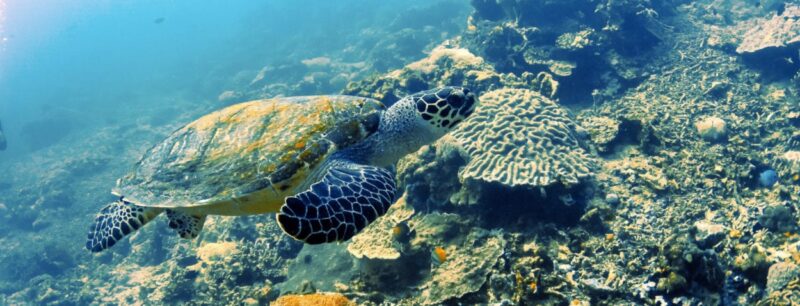
Diving at Nusa Penida is quite known for the Manta Rays that congregate around two main dive spots on the island: Manta Point and Manta Bay. These Manta Rays feed near the island and use cleaning stations. The best news, however, is that these Manta Rays can be spotted year-round at Nusa Penida.
[visualizer id=”3294″]
Another attraction to Nusa Penida is the Mola Mola. Mola Mola can be spotted in the deep from July to October! Additionally, there are numerous hawkbill turtles that will be seen cruising around the reefs.
If you are more fascinated by the macro life than the larger ocean life, then there are numerous nudibranchs that can be found at these two dive sites. These brightly coloured slugs hidden in the coral are a good challenge to spot especially when competing with the moderately strong current. You may want to bring a reef hook with you in order to be stable enough for a photo.
Other identified species: Boxfish, Peacock Flounder, Clark’s anemonefish, Pink Anemonefish, False Clown anemone fish, Two-Tone Dartfish, Blue Spotted Ray, Trumpetfish, Peacock Mantis Shrimp, Painted Spiny Lobster.
Do and Don’t of Diving with Manta Rays
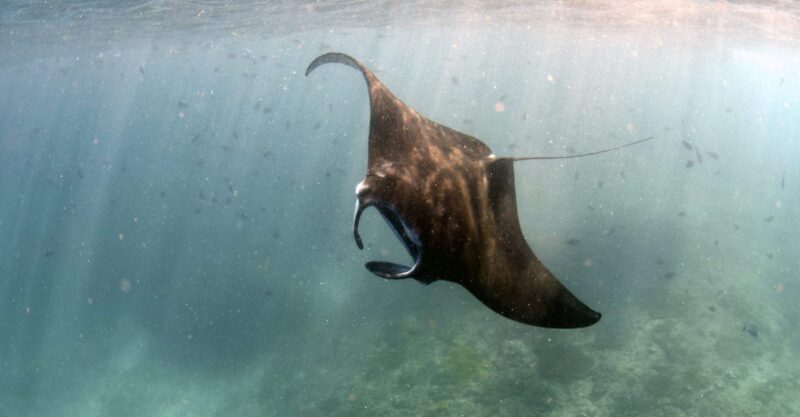
If you are like the majority of visitors to Nusa Penida you are hoping for a glimpse of the beautiful ocean creature: the Manta Ray. There are plenty of them around the island, and it is almost guaranteed that you will spot one during a trip there (however, there is still always a chance it may not happen).
While there is a lot of tourism to Nusa Penida to see Manta Rays, it is important to talk about how to properly and ethically interact with the Manta Rays.
Don’t
- Do not chase the Manta Rays
- Do not touch the Manta Rays
During one of my dives, a manta ray was feeding which is typically an amazing experience to get to witness. Unfortunately, the manta was chased off by two snorkelers with a go-pro. The Manta immediately just swam out to the deep with these two snorkelers trying to keep up for some video coverage.
Little did these snorkelers know is that if they had simply floated at the surface they would have gotten better photos of the Manta Ray actually feeding instead of the back end of a Manta Ray swimming as quickly away as possible.
Do
- Stay where you are and enjoy the show!
A Manta that is swimming in loops collecting zooplankton is feeding. Additionally, a Manta near a rock formation is being cleaned by parasitic copepods and a variety of small cleaner wrasse species. Both of these behaviours involve staying in one area.
That means if you see a Manta conducting this behaviour the best way to enjoy it is to not bother the Manta Ray. Moving near it, or chasing the Manta for a shot will just result in the Manta swimming away. Ultimately, a photo of a Manta being cleaned or feeding is better than a photo of it swimming away!
Ethical Swimming and Diving with Manta Rays
It is important to support businesses that promote ethical interactions with Manta Rays. This means not using organizations that may be baiting, or that encourage touching of the Manta Rays.
During my time at Nusa Penida, it appeared that most of the organizations were in support of ethical observation of Manta Rays, but it is always important to still verify as things may change.
Make sure whoever you organize with does not promote baiting, or touching with Manta Rays. Additionally, they should provide briefs about how to properly interact with the Manta Rays such as what is stated above in the Do and Dont’s of Manta Rays.
Ultimately, you can have positive interactions with the Manta Rays without bothering them during the feeding or cleaning process. If you stay where you are, there is also the chance of the Manta Ray swimming to investigate out of curiosity, in this case just remain where you are for the best “interaction”.
This makes for a better experience for you, and for the rest of the people in the group!
Help Manta Conservation
If during your trip you are lucky enough to catch a couple of shots of a Manta rays swimming about then you can help research and conservation by submitting your photo to Manta Trust.
The organization identifies the Manta Ray by spotting on the belly of the ray. Through your contribution the organization can tell you which Manta you spotted (a lot of them have names!) and you contribute to the tracking of the ray. If you by chance spot a Manta that has not been named before, you may be given the opportunity to name it!
Submit your photos of the Manta Ray’s underside here
Where to See Manta Rays at Nusa Penida
Manta Point
Manta Point is a popular dive and snorkel location. Boats are able to access this cove due to the protection the cove offers against the ocean currents. The water is additionally shallow, making it easy to see Manta Rays from the boats. The location of the Manta Rays is easy to spot based on where all the boats are. You will see a large variety of long boats out there that snorkelers paid for a chance to see a manta ray – but also due to this it can grow incredibly crowded around here with the snorkelers.
If you are diving you will move a bit away from the cove as you will not have to worry about the protection as much as the snorkelers. This can mean you will spot manta rays that are swimming away from all the snorkelers to the deeper waters.
Additionally, this area has numerous shelves that are used as cleaning areas for the Manta Rays. During your dive, you will dive around these different shelves to see if there are Manta Rays being cleaned.
Sections of Manta Point that reach up to 25m and go deeper the father from the cliffs that a diver goes. Rocky formations that are cleaning stations is where you will find Mantas.
Manta Bay
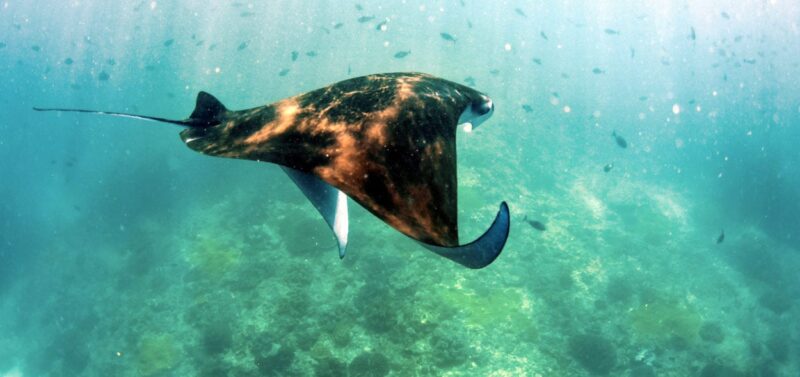
Manta Bay is similar to Manta Point. However, this location is not as visited due to the lack of shelter from the elements. The currents, or waves, can be too strong for dive or snorkelling vessels to venture out. Therefore the ability to dive is dependent on the conditions if there will be a dive trip.
However, if able this is the ideal location to visit as more dive boats can visit this spot than snorkelers. Therefore, more secluded.
How to Dive at Nusa Penida
There are two options for diving at Nusa Penida.
- Stay at Nusa Penida. Grab a ferry over from Bali and stay on the Island. Either take the Ferry (cheaper) or take a speedboat over from Bali to Nusa Penida. However, a scooter is the only way to commute around the island. Nusa Penida can be difficult to reach given the secluded nature of the Island. You will be dropped off at a wharf in the middle of the ocean and be peaked up by local speed boats from Nusa Penida.
- Be prepared to stay longer or shorter than your stay, trying to catch the right boat off the island can be surprisingly difficult. You can get conflicting information from hotels to the people actually working on the beach.
- Pack lightly, the boats will be extremely crowded and the one to reach Nusa Penida will be a very tiny local boat. The boats are not made for giant luggage as you will have to lift it into the boat and across the beach yourself.
- Dive Shop on Nusa Penida: Blue Corner Dive
- Take a driving trip from Bali. A couple of dive shops offer dive trips from Bali over to Nusa Penida. If you do not want to bother with additional arrangements and travel, then just jump on one of these dive trips.
- Dive shops that commute to Nusa Penida: Blue Season Bali
Other Activities on Nusa Penida
Want to check out more that Nusa Penida has to offer? Read here about what you can accomplish in a day trip!


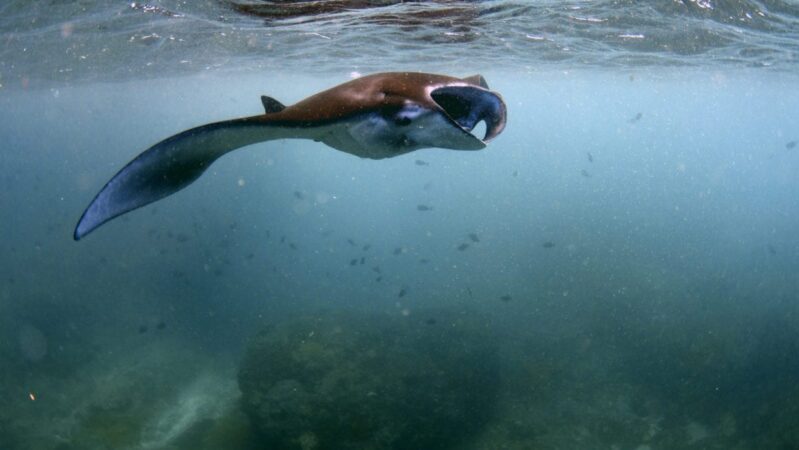
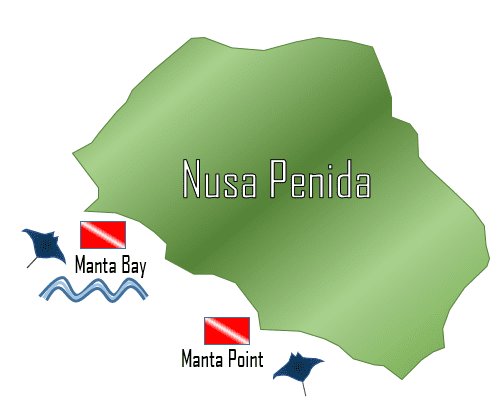
Oooooh, have always wanted to do this! Did you get a chance to dive Komodo?
Such an informative post! I’m hoping to go to Bali later in the year and have read up on diving so much as I want to do it but I’m so nervous. Your photos make it look so tranquil and beautiful, so hope I’m brave enough to do it!
Love Nusa Penida – still need to go back though and see a mola mola! You are very brave though, I would never dive here with a 3mm. On my last dive I rented a 5mm and was freezing cold.
Funny you recommend Blue Season Bali – I used to work with them actually! Thank you for pointing out the Do’s and Don’ts of swimming with mantas! SO many people chase these poor animals which makes me so angry!!
lovely pics and very informative
Nusa Penida is one of the best island I have ever seen. Loved your diving experience. I couldn’t do it in my trip for some reason, but if I visit next time I would definitely try. Thanks for sharing this beautiful article.
Oh man, I would so LOVE to swim/dive with manta rays! That sounds amazing!
Wonderful! We’ll add it to our list for when we go to Asia!
These photos are amazing! This is something I would love to do!
[…] If you are really interested in seeing the larger ocean life then check out my post on where to see whale sharks, or diving at Nusa Penida to encounter manta diving at Nusa Penida to encounter manta rays […]
[…] READNusa Penida Dive Trip […]
[…] Nusa Penida Dive Trip […]
[…] .IRPP_kangoo,.IRPP_kangoo .postImageUrl,.IRPP_kangoo .imgUrl,.IRPP_kangoo .centered-text-area{min-he… […]